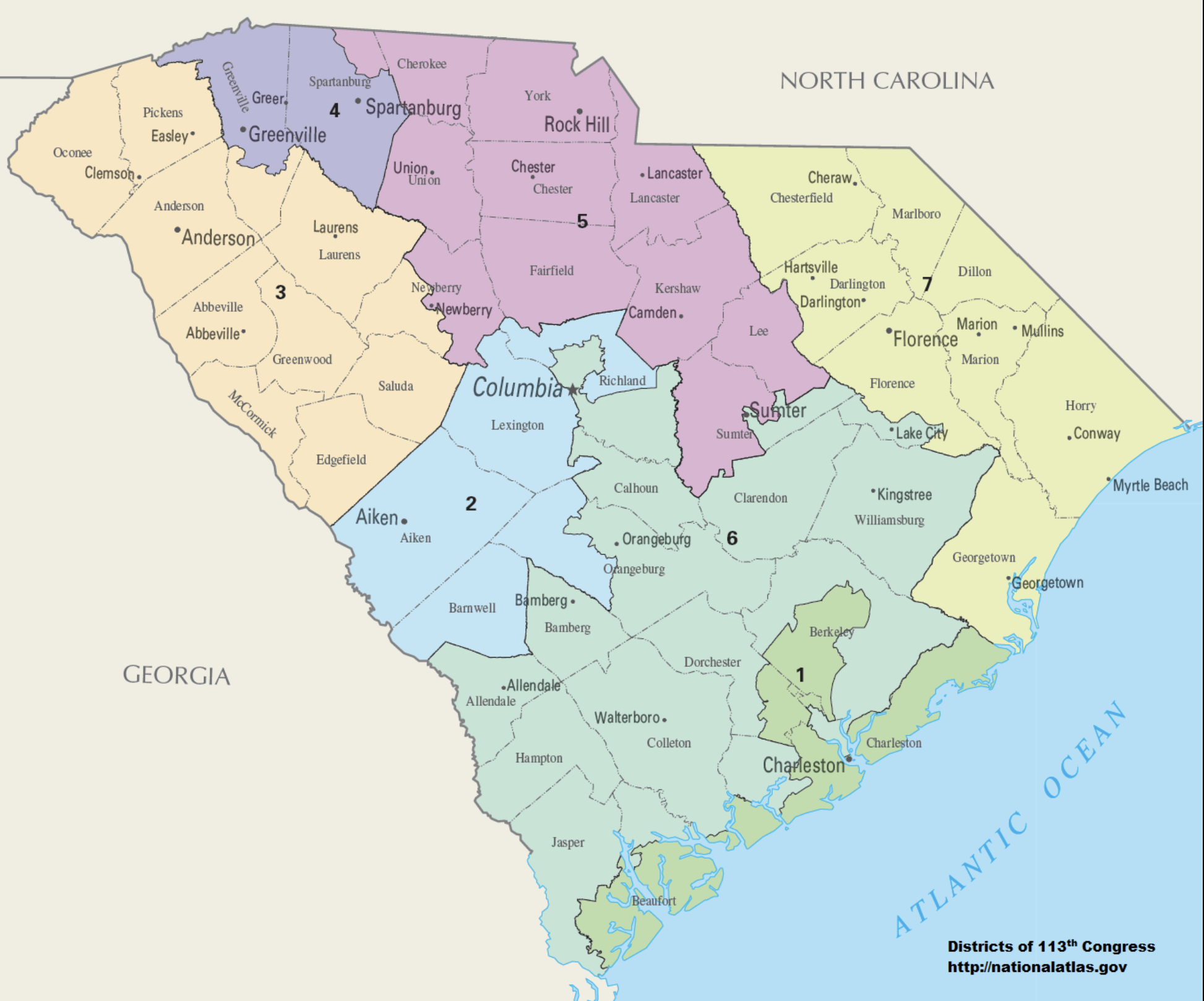By Jeremy Holland
Key Points:
- Teachers located in conservative-leaning states have started to come together and participate in mass strike events across the U.S.
- These educators are demanding more educational funding, better teacher/staff pay, vital student services, and the right to be treated like professionals in the classroom.
- So far, there have been multiple successful strike efforts in states across the Midwest and Southern regions of the country, where teachers are pressuring state legislators to fully fund education.
In 2019, Red for Ed in South Carolina (SC for Ed) organized 10,000 educators to swarm the state capital to demand smaller class sizes, better working conditions, less testing, adequate pay, and fewer charter schools.
For their efforts, SC for Ed have gained a 4 percent salary increase, more protected planning for class, and have organized a forum of over 30,000 people focused on educational concerns.
Red for ED is a social movement organized by communities coming together for better school funding and teacher pay. Those involved wear bright red, inspired by the color of little red schoolhouses and the apples given to teachers.
According to the National Education Association, the problem is we have textbooks from the 1980s, desks that are duct taped together, HVAC systems that no longer work, underpaid, and overworked educators, and many of our schools have been underfunded for years.
Many teachers are now working extra jobs to generate additional income necessary just to make ends meet. In fact, nearly one-third of educators work a second or third job. Pew Research Center recently found that roughly one-third of teachers with one year less of experience have non-school jobs over the summer, as do about 20 percent of teachers with two to four years of experience.
The sheer number of educators supplementing their income with jobs inside and outside the school system is glaring evidence that teachers are paid too little. This contributes to the mass exodus of teachers from the public education system and is responsible for the pronounced teacher shortage that must be resolved.
Recent polling reveals that most of the American people are on the side of the struggling teachers. For instance, 66 percent of Americans believe that public school teachers have the right to strike for issues such as higher pay, better school funding, and stronger workplace benefits.
With the under-appreciation of our teachers and the underfunding of our school system, the question arises: How will teachers challenge this system and convince lawmakers to fully fund education?
Red for Ed Actions & Successes
The Red for Ed movement began gaining steam in West Virginia early 2018 when teachers and support staff staged a statewide strike walking out the classrooms and marching on the state house. This initial action inspired many other educators across the country to demand more. Later that year the nation saw mass teacher walkouts in Oklahoma, Arizona, Kentucky, and Colorado.
Confounding all expectations, these actions erupted in Republican-dominated states with weak labor unions, bans on public sector strikes, and electorates who vote mostly for conservative candidates. All in all, more than 375,000 education workers engaged in work stoppages in 2018, bringing the total number of strikers that year to 485,000—the largest number since 1986. In 2019, a total of 425,000 workers struck again with a majority coming from the education sector.
West Virginia
What caused the educational funding crisis in West Virginia? Put simply, the Republican controlled state legislature enacted a series of corporate tax cuts that began starving the schools of resources and sabotaging the education of working-class children.
In 2017, West Virginia ranked 48th among the states in educator’s salaries. This lack of a living wage meant that over 700 spots for teachers across the state went unfilled. Eventually a critical mass of teachers became fed up with the dire situation in the schools.
In response, the state’s two teachers’ unions started asking whether teachers in 55 counties would vote to back a work action. The main two demands of the strikers would be an immediate 5 percent raise and stopping the state healthcare premiums from skyrocketing every year.
On the first day of the strike, over 10 thousand teachers marched on the state capitol proclaiming, “Fired Up and Fed Up” and “Enough is Enough.” The strikers held fast for nine straight days declaring that until legislators pass a bill giving raises at 5 percent, they would hold out indefinitely.
Soon, the state capitulated and passed a 5 percent raise to all public employees and the governor signed an executive order to fix the public employee’s insurance program.
Oklahoma
It had been a decade since Oklahoma public school teachers had seen a state-wide raise, which put their average teacher’s salary at second lowest in the country. Consequently, the state could no longer attract enough certified teachers, leaving the schools to fill two thousand vacancies with emergency certified staff who didn’t have teaching degrees.
To address this dire lack of funding, the Oklahoma Education Association called for a statewide strike demanding raises of $10,000 for teachers and $5,000 for support staff, and an $800 million tax increase for school funding, state employee raises, and improved healthcare.
In response to the teacher’s nine-day walkout, the state legislature compromised and increased teacher salaries by $6,100 on average and those of the support staff by $1,250.
Arizona
After these two initial examples of successful strike actions, disgruntled teachers in Arizona began to take notice as per pupil funding had been cut by 36 percent over the previous decade. Because teacher pay was so inadequate, more than two thousand teaching positions were going unfilled.
After weeks of organizing online, they called for a one-day protest. The teachers came out that day demanding an immediate 20 percent pay increase, a restoration of $1 billion of funding cuts, and a promise of no more cuts until Arizona’s per pupil spending matched the national average.
A couple weeks later, fifty to seventy-five thousand red-shirted protesters filled downtown Phoenix surrounding the capital. Teacher’s carried signs reading, “I’m Standing Up for Your Child” and high school bands joined together to perform Twisted Sister’s “We’re Not Gonna Take It.”
After six days of striking, legislators capitulated and agreed to 20 percent pay increase over a three-year period, and extended raises to all school staff.
Other Notable Protest Actions
To be clear, these were the most successful strikes, but other states had major teacher walkouts in 2018 including Kentucky, Colorado, and North Carolina which had varied amounts of success. Riding the wave of these victories, the teacher’s movement continued in 2019 with a one-day rally in South Carolina, and with more local strikes in major cities like Los Angeles, Oakland, Chicago, and Denver.
Future of Red for Ed
There are some teachers looking at the impact of Red for Ed, since the unexpected rise of COVID-19 in 2020, who are concerned that the fruits of the movement are going “rotten.” In these unprecedented times, teachers have had to quickly adapt to the new reality of distance learning.
In the meantime, teacher shortages are becoming more prevalent nationwide. A recent survey of almost 1,200 school and district leaders reports that two-thirds of respondents’ report teacher shortages.
Several schools have even shut down classrooms because of lack of teachers. For instance, Eastpointe Community Schools in Michigan abruptly moved its entire middle school back to remote learning because it is missing a quarter of its teaching staff.
Although the mass walkouts and strikes of 2018-2019 have been temporarily tamped down due to social distancing concerns, behind the scenes teachers are still organizing and preparing for the next opportunity to convince legislators to fully fund our schools.
Considering the amazing gains teachers have secured in conservative dominated states, perhaps the revival of organized labor does lie in the hands of our public educators. Only time will tell. One thing is clear, if not for the efforts of these educators, the infrastructure of our collapsing educational system would be even worse.





